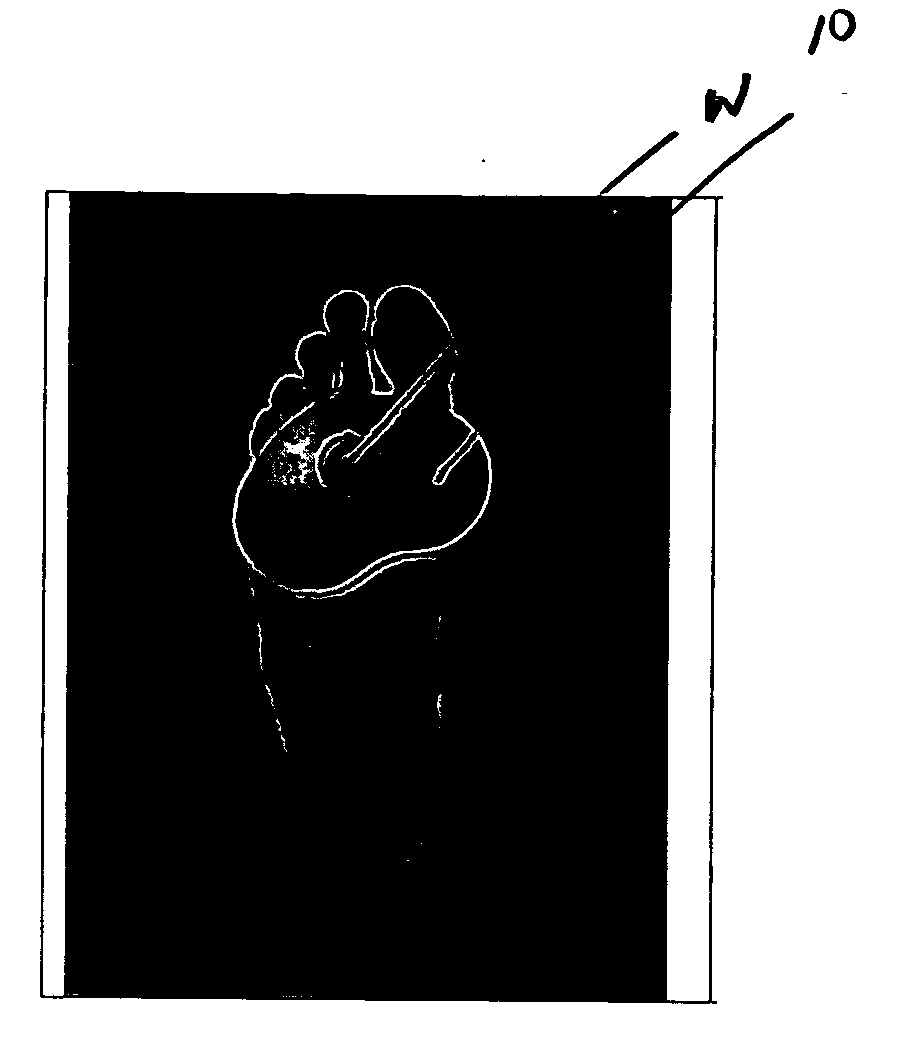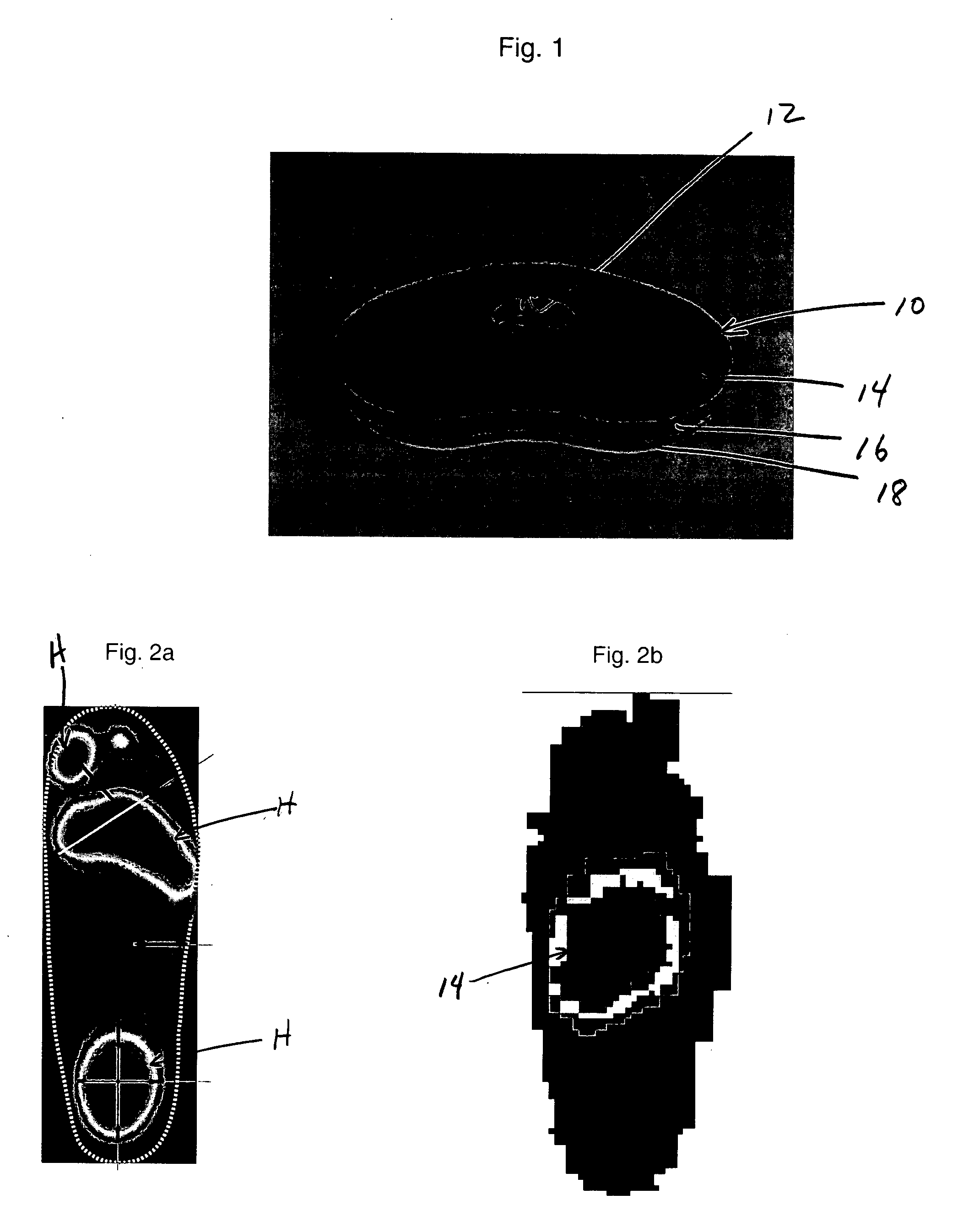Load relieving wound dressing
a wound dressing and load-relieving technology, applied in the field of wound dressings, can solve problems such as foot ulcers, and achieve the effects of facilitating patient use, favorable wound healing environment, and enhancing mechanical off-loading performan
- Summary
- Abstract
- Description
- Claims
- Application Information
AI Technical Summary
Benefits of technology
Problems solved by technology
Method used
Image
Examples
Embodiment Construction
[0031] The load-relieving dressing and foot bed described here have been shown to provide mechanical off-loading by reducing foot plantar surface pressure at the wound site during load bearing. The dressing and foot bed combination are simple for health care practitioners to apply, easy for patients to use and create a more favorable environment for wound healing.
Load Relieving Dressing
[0032] Referring now to the drawings, FIG. 1 shows a load relieving dressing 10 or “LRD” of the present application. The LRD of the present application is provided with an external dressing geometry which is shaped to correspond approximately and substantially to the typical load bearing regions of the foot. FIGS. 2a and 2b demonstrate barefoot pressure distributions, with higher plantar pressures being measured in the highlighted regions indicated at H. Obviously, plantar pressures within the load bearing regions of the foot may vary greatly. In FIG. 2a, the highlighted areas of increased pressure...
PUM
 Login to View More
Login to View More Abstract
Description
Claims
Application Information
 Login to View More
Login to View More - R&D
- Intellectual Property
- Life Sciences
- Materials
- Tech Scout
- Unparalleled Data Quality
- Higher Quality Content
- 60% Fewer Hallucinations
Browse by: Latest US Patents, China's latest patents, Technical Efficacy Thesaurus, Application Domain, Technology Topic, Popular Technical Reports.
© 2025 PatSnap. All rights reserved.Legal|Privacy policy|Modern Slavery Act Transparency Statement|Sitemap|About US| Contact US: help@patsnap.com



